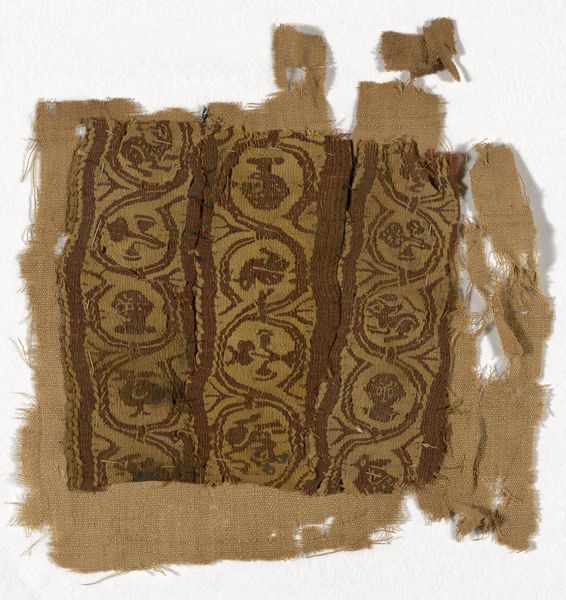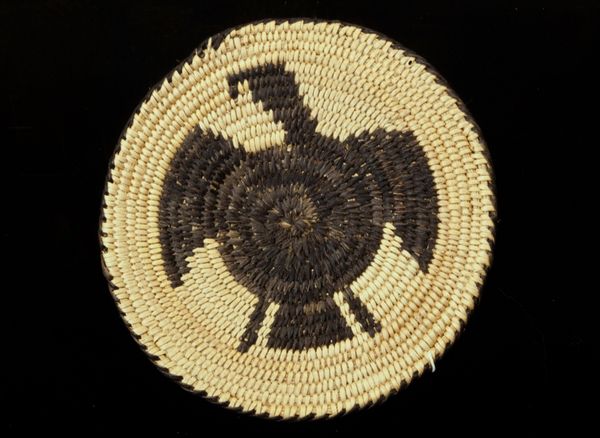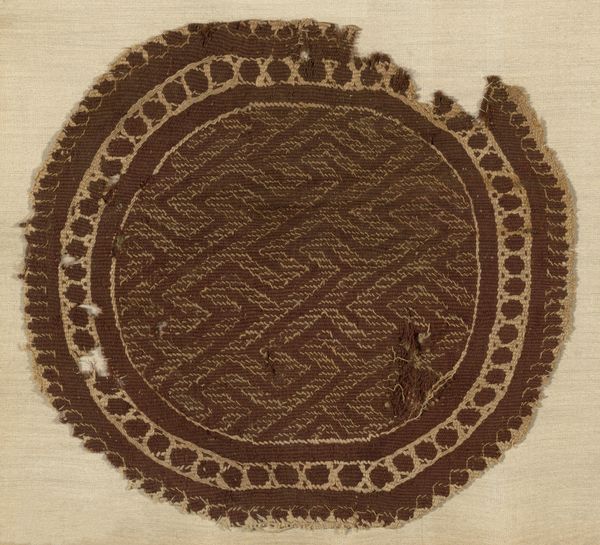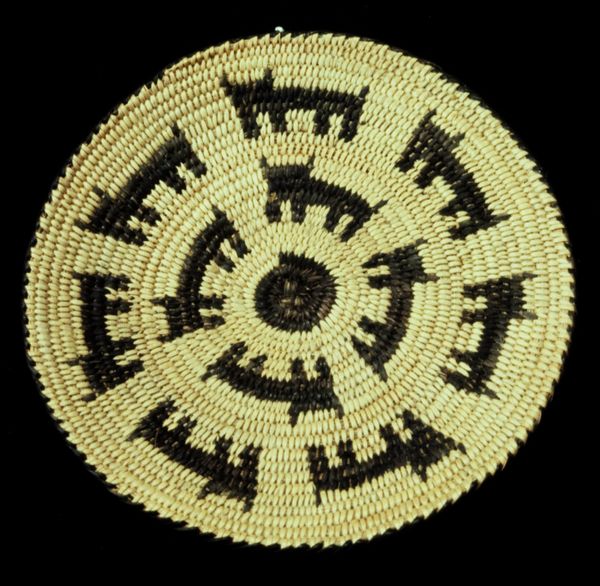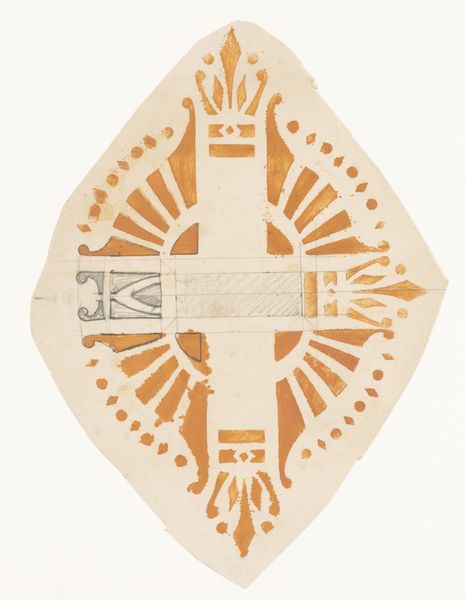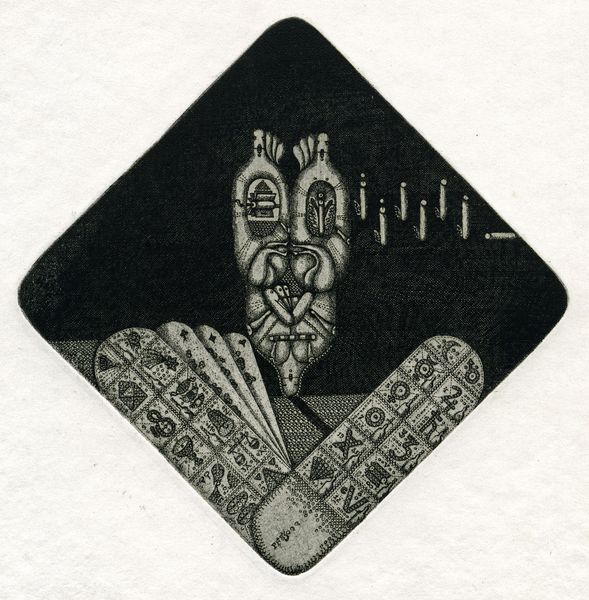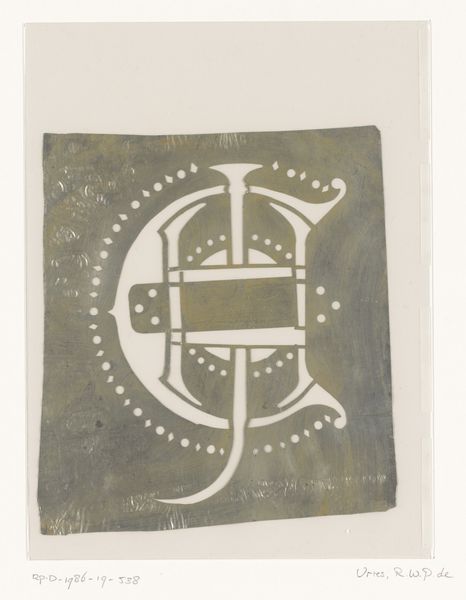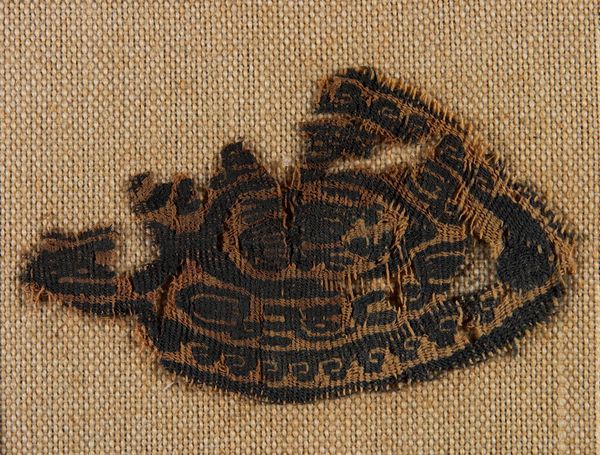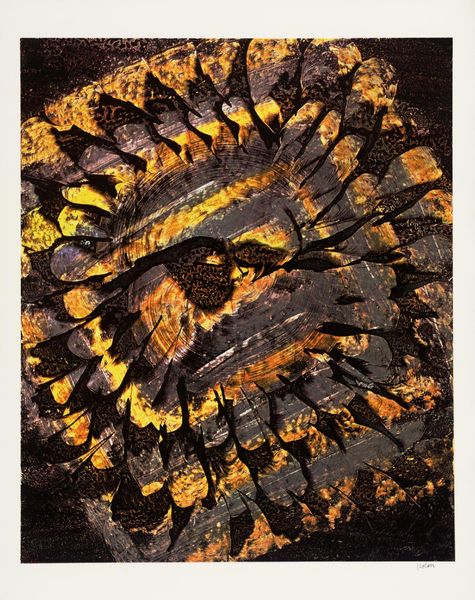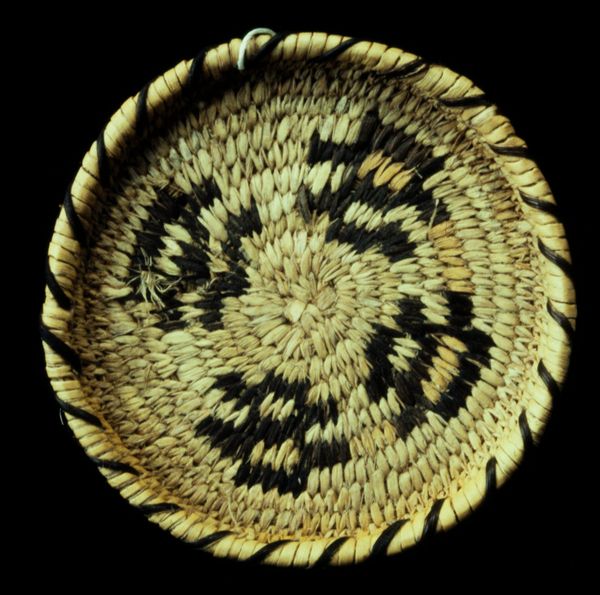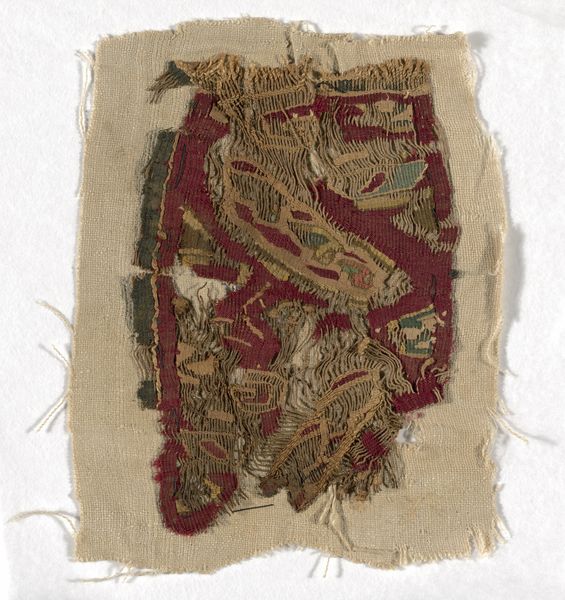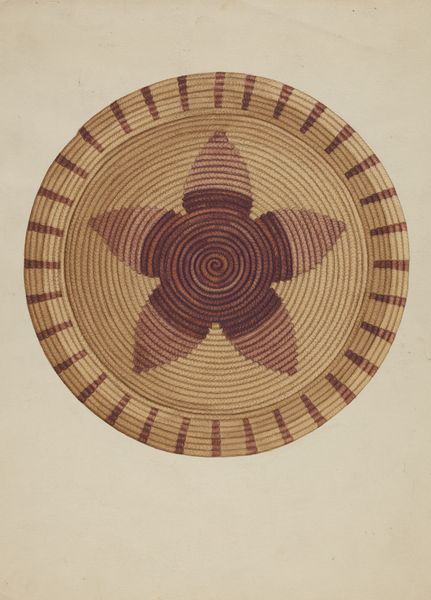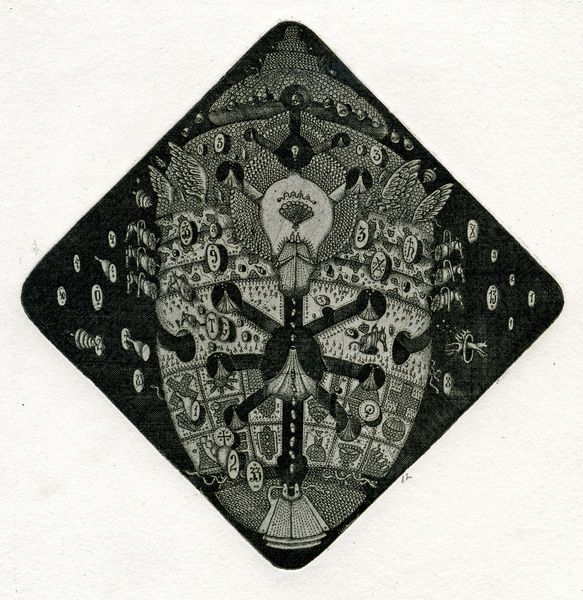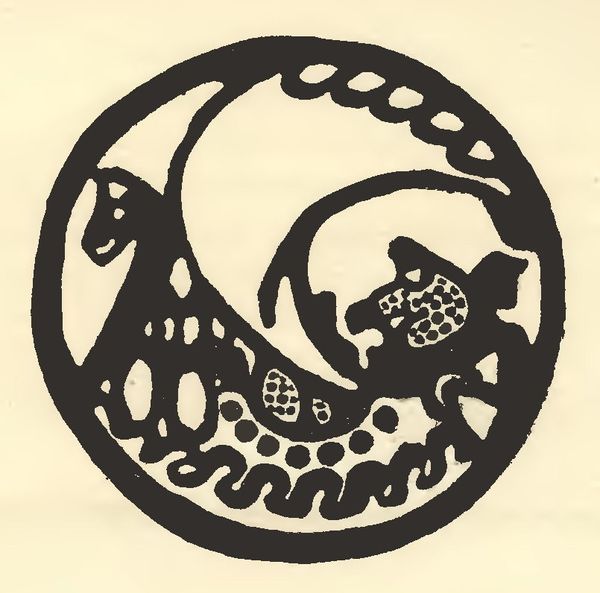
fibre-art, weaving, textile, wool
#
fibre-art
#
carving
#
weaving
#
textile
#
wool
#
form
Dimensions: 7.3 × 7 cm (2 7/8 × 2 3/4 in.)
Copyright: Public Domain
This small Roundel was made by a Coptic artist using tapestry weave, a technique where colored weft threads completely cover the warp, creating a dense, patterned surface. The material is likely wool or linen, common in Coptic textiles, dyed with natural pigments to achieve the dark, contrasting designs against the lighter ground. Imagine the labor involved: from raising the sheep or cultivating flax, to spinning the fibers into thread, preparing the dyes, and then the meticulous work at the loom. The roundel’s design, featuring stylized figures within concentric circles, was achieved through careful manipulation of the weft threads, building the image one row at a time. Textiles in ancient Egypt weren't merely functional; they were potent symbols of status, wealth, and identity. Fragments like this offer insights into the skilled craftsmanship and cultural values of Coptic society. They challenge our conventional understanding of ‘art,’ reminding us that beauty and meaning can be woven into the everyday.
Comments
No comments
Be the first to comment and join the conversation on the ultimate creative platform.
